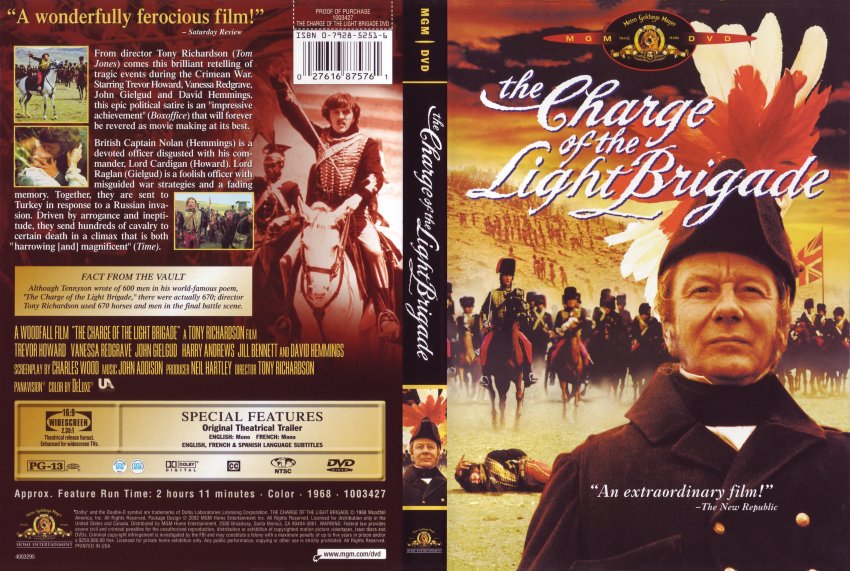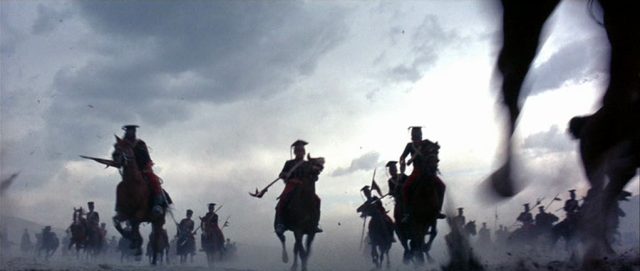

So, Richardson brought in Charles Wood, a comic writer best known for his work on The Beatles' second film, Help! (1965). It was also the distribution company's major release for 1968.Īs had happened on Tom Jones, Osborne turned in a script that, despite brilliant sections, was far from finished. So they hired a researcher to make sure that every historical reference in Osborne's script could be documented from sources in the public domain.ĭespite the box office failures of such recent projects as The Loved One (1965) and The Sailor from Gibraltar (1967), Richardson and Osborne's Woodfall films had arranged for United Artists, which had financed Tom Jones, to back them for the considerable budget of $8 million (which was a huge sum at the time). At the time, actor Laurence Harvey, who hoped to star in his own version of the events, held them. Wanting a more honest treatment of the disastrous charge than had been depicted in Warner Bros.' 1936 version, starring Errol Flynn and Olivia de Havilland, they looked to Cecil Woodham-Smith's revisionist The Reason Why, but the book's screen rights had been tied up for years by various producers who could not get the project off the ground. Richardson had been working on the idea for years with John Osborne, whose breakthrough play, Look Back in Anger, the director had brought to both stage and screen before the two had teamed for Tom Jones. Though The Charge of the Light Brigade was a disappointment in relation to its cost at the box office, it has developed a group of faithful fans who herald the iconoclastic epic as far ahead of its time politically and stylistically. In fact, some would claim he took on this debunking view of history's most famous failed military action in an effort to make lightning strike twice. John Gielgud in The Charge of the Light Brigadeīy the late '60s, Tony Richardson was looking to re-capture the magic of his 1963 historical hit Tom Jones. "It will be a sad day for England when her armies are officered by men who know too well what they are doing - it smacks of murder."

Following the slaughter, Cardigan rides his horse over Nolan's corpse and joins the other officers in bickering over where the blame for the senseless debacle should be laid. Though Nolan attempts to halt the charge, he is killed by an aerial burst, as the brigade stubbornly continues its suicidal march. In the confusion, Cardigan's Light Brigade veers into the wrong valley and heads straight into the waiting Russian cannons. Infuriated by the lack of immediate retaliation as the Battle of Balaklava begins, Nolan takes it upon himself to deliver one of Raglan's incoherent military orders to Cardigan and his brother-in-law, Lord Lucan. Duberly, the unfaithful paymaster's wife, who cheers on the soldiers by day and their commanding officer by night. Failing to follow through on his forces' advantage, the doddering Lord Raglan ponders his next course of action, while Cardigan dallies with Mrs. Once in the Crimea, the British army, although poorly-provisioned and cholera-ridden, wins an initial victory over the Russians and quickly becomes complacent about its power. Left behind in England is an officer's wife, Clarissa Morris, with whom Nolan has been having an affair.

As the two men's mutual acrimony reaches its peak, the British declare war, join forces with the French, and set sail for Turkey. While Cardigan is eagerly planning to lead an army in the Crimean expedition to protect the Ottoman Empire from the invading Russians, he is also involved in a dispute with Captain Lewis Nolan, an outspoken young officer recently returned to Britain from India. In 1854, 39 years after Napoleon's defeat at Waterloo, a group of aristocratic British army officers, including the arrogant Lord Cardigan, become restless for an opportunity to seek military glory.


 0 kommentar(er)
0 kommentar(er)
